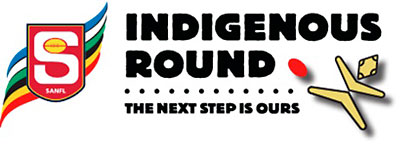Sport
Aboriginal AFL statistics
Browse selected Aboriginal Australian Football League (AFL) statistics, facts & surveys.

Wishing you knew more about Aboriginal culture? Search no more.
Get key foundational knowledge about Aboriginal culture in a fun and engaging way.
This is no ordinary resource: It includes a fictional story, quizzes, crosswords and even a treasure hunt.
Stop feeling bad about not knowing. Make it fun to know better.
Aboriginal AFL statistics
This is a small snapshot of Aboriginal AFL statistics in 2008 [1]:
- The AFL's Aboriginal programs reach more than 87,000 Aboriginal people or 36% of Australia's Aboriginal population.
- 25 Australian Football Indigenous academies operate across the country.
- Four AFL clubs engage with Aboriginal communities: Essendon (Wadeye), Geelong (Gove and Groote), Richmond (Alice Springs) and Collingwood (Katherine).
- 189 Aboriginal players play AFL/VFL football.
- 72 players are on AFL club lists, an historic record.
- Aboriginal football players make up 10% of the AFL competition, another historic record.
- 14 Aboriginal players have played 200 games or more, 7 more than 250 games, one has reached 300 games (Gavin Wanganeen).
- 156 Aboriginal players have made their AFL/VFL debut since 1980. Only 23 did so prior to 1980.
AFL clubs employ around 1,300 employees [2]. Out of these
- only 5 are Aboriginal,
- only one Aboriginal person is a club executive,
- only one is on club boards, [3] and
- only 2 out of the 150 coaches are Aboriginal.
AFL Women's (AFLW)
The first ever AFLW exhibition match was in 2013 as the curtain raiser for Melbourne and the Bulldogs. At the time only 4 out of 50 women selected were Aboriginal (Bronwyn Davey, Kirby Bentley, Kira Phillips, and Ally Anderson).
In 2017 the AFL launched its inaugural AFLW (AFL Women) season. By 2019, only 4% of the AFLW were Aboriginal, compared to 10% in the men’s AFL premier league. [4]
Delma Gisu, from Mer Island (Murray Island) in the Torres Strait, in 2019 became the the first Torres Strait Islander to play in the AFLW. [5]
We've got so much talent in our communities and our girls very rarely have that opportunity... to go out.
— Kokatha woman Bronwyn Davey, coach of the Adelaide Crows Female Indigenous Academy [4]
Survey: Racism in football
Which football code is the most racist?
- Rugby League (NRL)
- 41.8%
- Football
- 8.2%
- Australian Rules (AFL)
- 4%
- Rugby Union
- 2.3%
- Don't know
- 43.7%
Sydney Morning Herald, 19/6/2010
Indigenous Round
Each year in AFL round 9 is the Indigenous Round, a themed round to acknowledge and celebrate Indigenous players. It culminates with the "Dreamtime at the G" clash in Melbourne. The AFL has more on the Indigenous round.

Video: TV commercial for the 2013 Indigenous Round
Australia's most successful football club
St Mary's Football Club is claimed to be Australia's most successful football club since World War II [6].
It was formed in 1952 in Darwin, Northern Territory. The club is known as the 'Green Machine' from the colour of their jumpers. It collected 28 flags and played in 44 premier league grand finals.
St Mary's Football Club was first created so that Aboriginal and Islander people could have a place to meet and play football, as they were banned from being in the central business district of Darwin after 6pm during Australia's assimilation policies.
One of the great records of the club is a win of 50 consecutive games in sequence that started in 1994. By March 2011 the club had won 773 of 1074 games at senior level and had never collected a wooden spoon, which equates to a 72% winning ratio over nearly 6 decades [6].
Story: Four spears in the ground
Trevor Jamieson is an Aboriginal actor on stage and in film. Some of his relatives were living a traditional life until the mid-1980s.
Trevor recalls how his relatives wondered about the things they saw when they experienced modern Australia [7].
"They'd see four spears on either end of this field, staked into the ground, and all these people with amazing colourful ochres – that's what they thought – fighting over a piece of meat, which is the footy.
So they left those tribes alone and they went their way back into the bush. They weren't going to get involved with this, no way."